Magic & Conjuring: page 211
Subtopics
Mentalism & Spiritism Cards Magazines & Journals with Demo Video DIY, Makers & Builders DVD (download+stream) Books (printed) Video clips (download) Theory, Articles & Reviews for Beginners Coins, Chips & Buttons Illusions, Escape & Stage Biographies & History in German (Deutsch) Marketing, Selling & Business Matters Audio Balls, Eggs, Dice & Cups Memory & Mnemonics Paper & Paper Money Science & Math Tricks Ropes, Ribbons, Strings & Reels Comedy Magic Compilations Patter, Plots & Scripts Physical (Non-Digital) Tricks & Gimmicks in Italian (italiano) Kids & Children Hypnosis & NLP Rings Cigarettes, Candles, Matches & Fire Liquids, Chemicals & Bottles Phone, Apps & eTricks Published 1800-1899 DVD & Video (disc) Silks & Flags Hands, Fingers & Body Thimbles Catalogs Chapeaugraphy Published before 1800 Ventriloquism Instruction Sheets in French (français) Second Hand in Spanish (español) Animals Gospel Magic Gift Cards & Donations Pickpocket Fiction for Resellers Free in Japanese (日本の)Authors
Products
| Sort by: Product Name Author+ | Listed | Price |
How to Compere & Radio MagicJohn Wade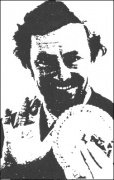 John Wade is an experienced full time professional well-known in the UK to TV viewers. He gives all the little known hints and tips on radio magic and how to compere. John Wade, a member of the Inner Magic Circle, is a popular and amusing lecturer at home and abroad, speaking about the history of magic, magicians, and The Magic Circle,... | ★★★★★ $14 to wish listMP3 | |
Do Get The Name RightJohn Wade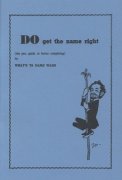 The pro guide to better compèring. From the introduction by Billy McComb: He's written a leaflet ... I shall not call it a book ... on Compering ... this bearded idiot. I've read it and regrettably he seems to know what he's talking about. I have written a bit to make the omissions less glaring ... but blast me cups and balls, he does appear to know what he's on about. And he does get booked to do it ... and at good money too. Forgive me. I must leave you ... 1st edition 1984, 13 pages; PDF 14 pages. | ★★★★★ $8 to wish list | |
Cartomancy for the Non-CartomancerJohn Wellington Wells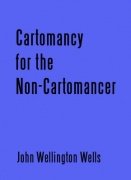 Cartomancy for the Non-Cartomancer is a collection of two treatises on the art of giving readings with cards. The best card trick John ever did was to tell a diner cook "everything going on around me". You can do the same. Not overnight, but quickly and easily. No cold reading, no spiel reading, no gimmicks or gaffs, just plain old fashioned fortune telling. 1st edition 2008; 26 pages. | $15 to wish list | |
Mercury: Or the Secret and Swift MessengerJohn Wilkins "Showing how a man may with privacy and speed communicate his thoughts to a friend at any distance." This is one of the first published works on cryptography, secret inks, signalling and secret codes - methods later used in thought reading acts. It is therefore not only of interest to cryptographers and historians of cryptography, but also to people who study silent codes and other related methods in mentalism. [Toole-Stott 731] [Please note that this is not a simple scan of an old book. This old book has been typed in and digitized with the utmost care, using an appropriate font with the correct glyphs to make this look exactly as the original. Literally hundreds of hours have been spent to restore and digitize this wonderful work. This sets a new standard for the preservation of very old books.] 1st edition 1641; 2nd edition 1694; PDF based on 2nd edition, 192 pages.... | $9 to wish list | |
Wyman's Hand-Book of MagicJohn Wyman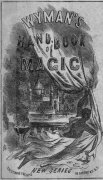 This work covers a lot of ground, from various parlor tricks, chemical tricks, card tricks, to a section on two person codes, and a section on artifices of cardsharks.
| ★★★★★ $8 to wish list | |
Coffee-Break MagicJohnnie Murray & Don Tanner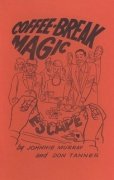 This ebook contains little tidbits and ideas that you can place right into your act. Some are clever, some are cute and some will make you (and your audiences) laugh out loud!
1st edition 1959; 1st digital edition 2013, 15 pages. | $5.95 to wish listPDF & EPUB | |
Vernon's VariantJohnny Thompson This is a wonderfully entertaining routine for two (or more) spectators. Each one of the spectators and the performer receives four cards. All go through the same actions of turning over cards and placing them on the top or bottom of their pack. In the end the performers cards are all face down, whereas the spectators cards have a face up card among them. This basic effect is done again two times in fairer and fairer ways. Very easy to perform. All you need is any double lift and the Elmsley count. You can read the original description of this routine in Ultimate Secrets of Card Magic. Recorded live at the Convention at the Capital 2000. runtime: 9min 36s... | ★★★★★ $6 to wish listMP4 (video) | |
Dual DivideJon Gower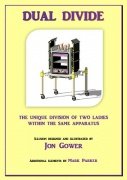 The unique division of two ladies contained with the same apparatus This is the second published stage illusion design from Jon Gower. Jon's good friend Mark Parker, author of illusion books Vivify and 4E illusion Design has again added additional elements to the design to help mold a modern creation for today's audiences. Dual Divide first came into existence in 2002 and was created to provide an alternative effect to other "cutting" illusions performed. This effect is a fast paced routine utilizing two assistants contained in one tiny cabinet suspended high off the floor within a metal... | ★★★★★ $12.99 to wish list | |
Labyrinth IllusionJon Gower & Mark Parker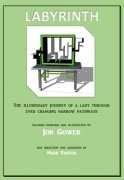 Labyrinth - The Illusionary journey of a lady through ever changing narrow pathways within a small elevated structure ending with a surprising vanish. This is the first published illusion design from Jon Gower. Jon has collaborated with his good friend Mark Parker, author of illusion books Vivify and 4E illusion Design. Labyrinth came into existence in 2007 and was born out of the many "puzzle" illusions performed. Wanting get away from the usual "girl in a box" routine this effect has the premise of a girl contained within and travelling through ever changing narrow pathways created within... | ★★★★★ $9.95 to wish list | |
Sticks and Stones: a leaflet for the left handJon Racherbaumer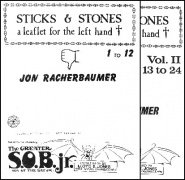 Racherbaumer, a man of words - sometimes strong words, sometimes exotic words, sometimes provocative words, sometimes strange words - but always thoughtful and worth reading, wrote a two year column in The Greater Son of the Bat Jr. journal (S.O.B.jr.). All 24 installments of this column are collected here. You will find a lot of Marlo-vian talk, good tricks and interesting articles. I was not a magician in the late 70s, so I cannot say how it was back then in the 'good old times', but reading Sticks and Stones allowed me to imagine how - I am sure - it must have been.
| ★★★★★ $20 to wish list | |
DreamworkJon Racherbaumer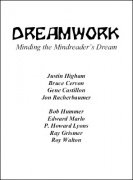 Several decades ago Bob Hummer invented a new principle which caused a short-lived stir among cardicians. The effect was called "The Mindreader's Dream". It sounds too good to be true: A spectator merely thinks of a card and performs a few, unseen dealing procedures with a deck of cards. The magician briefly scans the cards, consults a "dream book," and then names the mentally selected card. Racherbaumer collects in this ebook several improvements and variations on this basic principle, including the original Hummer method. The contributors are an eclectic group of specialists including Justin Higham,... | ★★★★★ $5 to wish list | |
Lipstick TracesJon Racherbaumer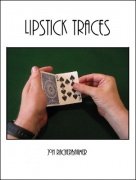 Racherbaumer thinks that the greatest sleight of the 20th-century is the Double Lift Turnover. If we consider the scores of different ways to lift, turn, toss, propel, flip, rotate, and spin two cards as one—not to mention ways of getting ready, gripping, insuring alignment, and unloading, then this is certainly a pretty valid move to pick as the most important sleight. At the minimum Racherbaumer has me convinced. In this ebook Jon collects ways to finesse the move and also traces its historical development. I am pretty sure you are using probably several times a double lift turnover somewhere... | ★★★★★ $5 to wish list | |
The Too Perfect TheoryJon Racherbaumer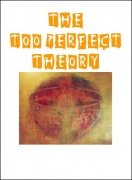 Can a magic trick be too perfect? Too impossible? Well, opinions differ. Some of the most prominent minds in magic disagree. Reading these essays will help you form your own personal opinion on this fundamental question. The theorists are:
1st edition 2008; 61 pages.... | ★★★★★ $5 to wish list | |
Thirty Years Ago: Contributions to the New PentagramJon Racherbaumer These are Jon Racherbaumer's contributions to the New Pentagram Magazine from 1979.
articles first appeared 1979; 14 pages | $5 to wish list | |
Real-Gone AcesJon Racherbaumer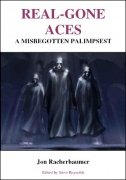 The 'Real-Gone Aces' problem is a side branch of the classic four Ace trick. In the classic you place four aces on the table, then put three indifferent cards on each ace, and magically all aces end up in the same pile. In the 'Real-Gone Aces' plot which was originated by Marlo, after correspondence with Neal Elias, three aces vanish to join an isolated leader ace. If this plot appeals to you then you will learn a good number of variations on it in this ebook. And I am sure, if you are the kind of guy or gal who enjoys reading such detail filled descriptions of finesses and fine points, then... | ★★★★★ $5 to wish list | |
Muscle Moves: A Crash-Course in Powerful CardmanshipJon Racherbaumer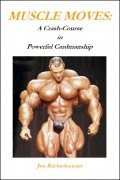 [Note: Despite all the rumors the cover does not show Jon in his younger years.] This is an ebook about moves, card moves to be precise. If you are already familiar with the basics of card magic then you will find here a lot of advanced moves and concepts to significantly improve your magic. If you are an experienced veteran of card magic you will probably still find some moves you are unfamiliar with. It is also a great reference ebook to have in case you run one day into any of these moves. The moves are described in text and photos with references and sources in the usually meticulous Racherbaumer style.
| ★★★★★ $15 to wish list | |
Marlo on Card to WalletJon Racherbaumer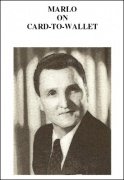 This treatise is a compilation of Marlo's methods for performing a card-to-wallet, incorporating his Exclusive Card in Wallet (1961) with methods published in Ibidem, [lc=4446 Hierophant, Card Finesse, Marlo's Magazine, and other previously unpublished but related methods. This material was discovered in a thick folder among Marlo's private effects. The idea of causing a selection to disappear from the deck and then reappear elsewhere is almost as old as playing cards. Reinhard Müller has painstakingly researched the basic effect classified as "Card Found in Some Object," which was being performed (in some form)... | ★★★★★ $15 to wish list | |
Synergistic SandwichesJon Racherbaumer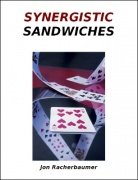 Sandwich tricks, long popular with cardmen, are nothing more than glorified locations. What makes them a little different is that the selections are found at specific places: between two other cards. Perhaps the best way to present these stunts is to perform a few in a rapidfire, successive way—each phase following the preceding one in a logical, progressive way. Also, each phase should be stronger than the preceding one. When such phases unfold in this manner, the overall impression will likely have more impact and be memorable. And this is exactly what Racherbaumer has engineered in... | ★★★★★ $10 to wish list | |
Olram AcesJon Racherbaumer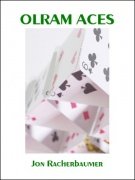
Olram Aces is a tribute to the genius of Edward Marlo which shows how Marlo's lifetime work steadily influenced Jon. The presentation makes maximum use of the gaffs and the Aces in the non-leader packets disappear in different ways that are successively stronger. It has been audience-tested on laypersons and magicians. In typical Racherbaumer style you also get a history on the Ace Assembly plot starting with The Discoverie of Witchcraft. 1st edition 2009; 10 pages. | ★★★★★ $5 to wish list | |
Marlo's Chameleon AcesJon Racherbaumer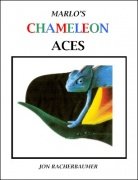 The basic plot of the "Chamele Aces" was developed in the late 40s by Edward Marlo, who shared ideas about this motif with Neal Elias in 1949. Elias wrote notes regarding the methods they explored, which he and Marlo then filed away. Neither published the "work;" however, Marlo performed an impromptu version at a Pittsburgh magic convention in 1955. Earlier the same year, Roy Walton published his version of "Chamele Aces" in The Gen (February-1955: Volume 10 - Number 10). The basic Chamele Aces plot is four red-back and four blue-back Aces transpose one at a time. 1st edition 2008; 80 pages. Table of Contents
| ★★★★★ $15 to wish list | |
Ladies on the LooseJon Racherbaumer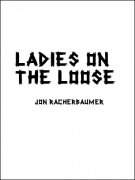 This routine was inspired by a magician’s challenge that it was unfeasible and unadvisable to perform several Ace Assemblies in a row for lay audiences. In fact, he argued that most Four-Ace Assemblies are neither entertaining nor interesting to layman because they are essentially magician’s exercises. This synergism is an exercise based on an opposite view; however, a key lies in presentation. The performer ostensibly is relating a bit of history regarding how a card trick was performed in the 16th century. In the course of the explanation, he acts as a proxy for skeptical spectators who... | ★★★★★ $5 to wish list | |
Hofzinser's Lost Ace-ProblemJon Racherbaumer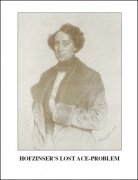 Karl Fulves published in Pallbearers Review an unsolved card problem wherein an Ace having the same suit of a previously selected card changes into that selection. The puzzling aspect of this problem was this: The four Aces are shown, mixed, and tabled face down. Nobody knows the order or disposition of the Aces, not even the spectator. Jon describes eight solutions each with its own trade-offs, strengths and weaknesses. Jon concludes his manuscript with: The Hofzinser Lost Ace Problem is a good example of a card problem that intrigues magicians because it lends itself to "creative noodling" and... | ★★★★★ $5 to wish list | |
Good TurnsJon Racherbaumer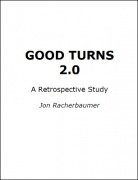 Even though the small packet card trick goes at least back to Hofzinser's times Jon argues that the modern small packet trick started in the 1940s when the Buckle Count was introduced by Dai Vernon and got into full swing when the Ghost Count (Elmsley Count) entered the stage. Jon writes: When the Elmsley Count became more widely known, the genie was out of the bottle. Vernon’s “Twisting The Aces” provided momentum. Marlo’s groundbreaking work on “Think Ace” and “Touch Turn” was privately circulating and then was eventually published in The Linking Ring. By the time Larry West and Verne Chesbro published Tricks You Can... | ★★★★★ $10 to wish list | |
ClockworkJon Racherbaumer On the Clock Effect The clock effect/principle is a variant of the automatic placement principle. It allows you to force a card. The procedure typically is that the spectator freely selects any full hour on the clock (1-12). Cards are then dealt into a clock pattern where one card takes the place of each hour. The card at the spectator's freely chosen hour is the force card, which for example could have been predicted beforehand. The Clock Effect using playing cards originated at the turn of the century. Potter's Index subsequently listed thirty-eight (38) references—one of the earliest... | ★★★★★ $10 to wish list |